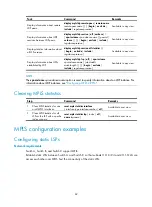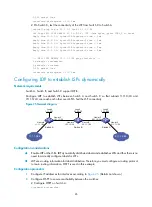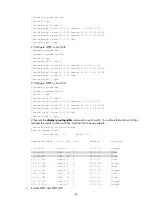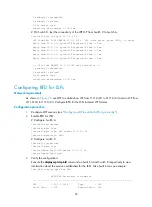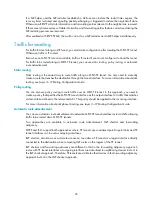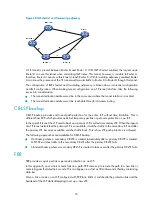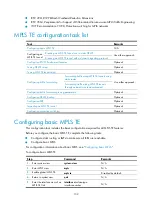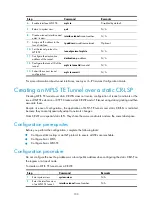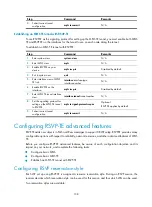
93
They are different in that CR-LDP establishes LSPs using TCP while RSVP-TE uses raw IP.
RSVP is a well-established technology in terms of its architecture, protocol procedures and support to
services. CR-LDP is an emerging technology with better scalability.
The switch supports only the RSVP-TE signaling protocol.
Forwarding packets
Packets are forwarded over established tunnels.
CR-LSP
Unlike ordinary LSPs established based on routing information, CR-LSPs are established based on criteria
such as bandwidth, selected path, and QoS parameters in addition to routing information.
The mechanism setting up and managing constraints is called Constraint-based Routing (CR).
CR-LSP involves the following concepts:
•
Strict and loose explicit routes
•
•
•
•
Administrative group and affinity attribute
•
Strict and loose explicit routes
An LSP is called a strict explicit route if all LSRs along the LSP are specified.
An LSP is called a loose explicit route if the downstream LSR selection conditions rather than LSRs are
defined.
Traffic characteristics
Traffic is described in terms of peak rate, committed rate, and service granularity.
The peak and committed rates describe the bandwidth constraints of a path.
Preemption
During establishment of a CR-LSP, if a path with sufficient resources cannot be found, the CR-LSP can be
established by preempting the resources of a lower-priority CR-LSP. This is called path preemption.
Two priorities, setup priority and holding priority, are assigned to CR-LSPs for making preemption
decision. Both setup and holding priorities range from 0 to 7, with a lower numerical number indicating
a higher priority.
For a new path to preempt an existing path, the setup priority of the new path must be greater than the
holding priority of the existing path. To initiate a preemption, the Resv message of RSVP-TE is sent.
To avoid flapping caused by improper preemptions between CR-LSPs, the setup priority of a CR-LSP must
not be set higher than its holding priority.
Route pinning
Route pinning prevents an established CR-LSP from changing upon route changes.
If a network does not run IGP TE extension, the network administrator is unable to identify from which
part of the network the required bandwidth can be obtained when setting up a CR-LSP. In this case, loose




